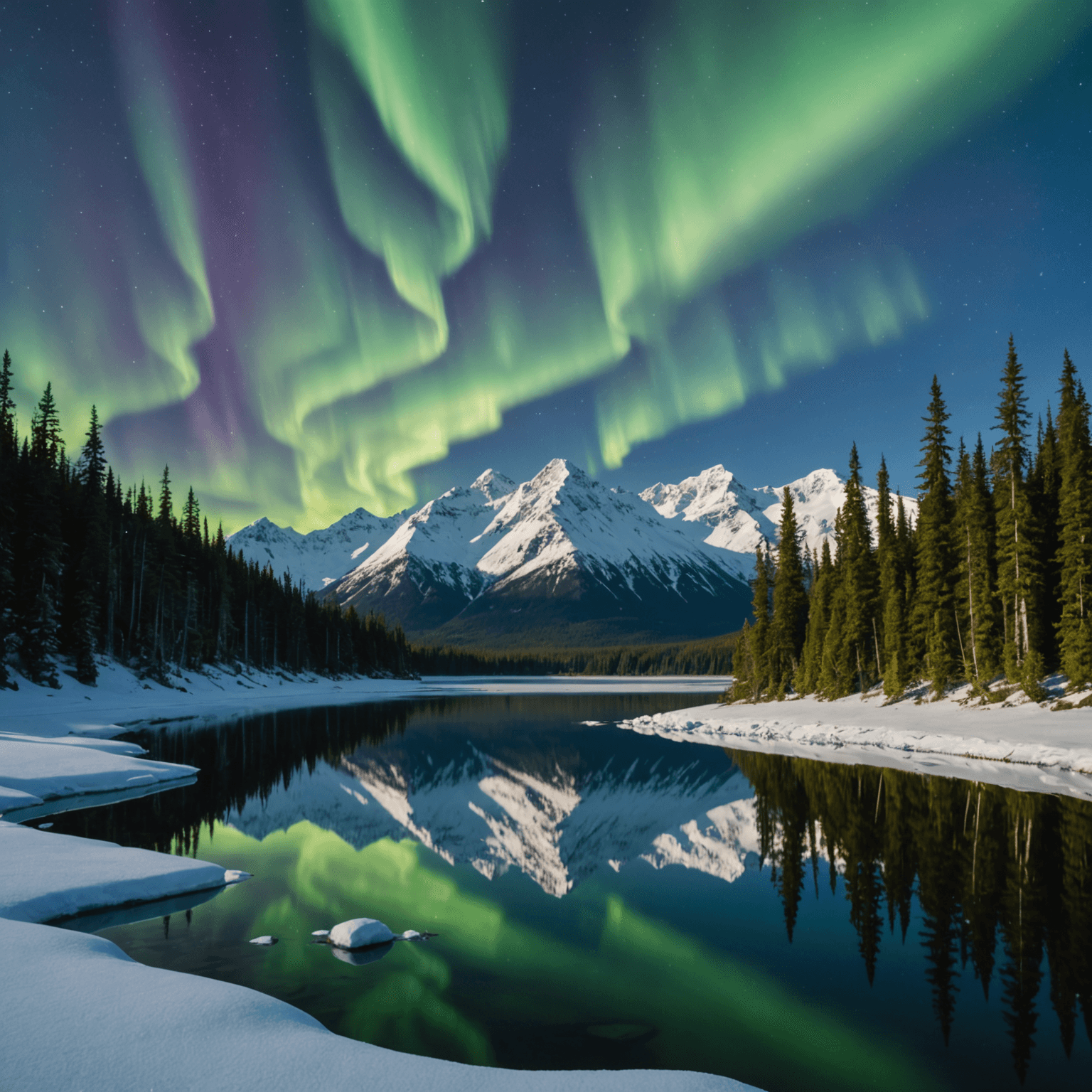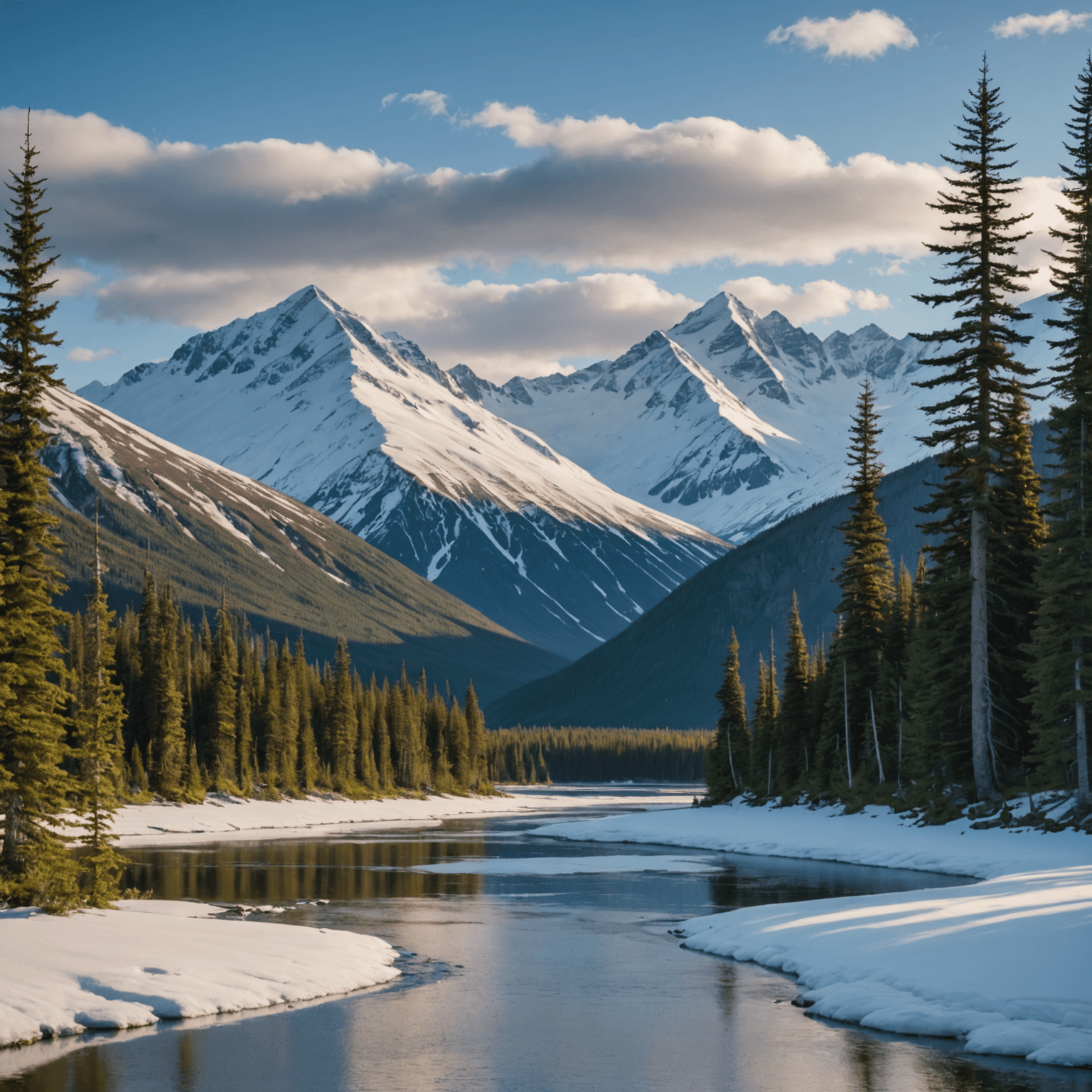Introduction
The Northern Lights, also known as the Aurora Borealis, are one of the most breathtaking natural phenomena visible from Earth. Alaska is among the top destinations in the world to witness this dazzling display of lights. Visitors to Alaska often wonder, “What is the best month to view Northern Lights in Alaska?” This question is crucial for planning a trip to maximize the chances of experiencing the aurora at its most vivid. In this guide, we’ll explore the best time to see the Northern Lights in Alaska, the science behind the aurora, and tips for planning your adventure.
Understanding the Northern Lights
The Science Behind the Aurora
The Northern Lights occur when charged particles from the sun collide with gases in the Earth’s atmosphere. This interaction creates the vibrant colors that dance across the night sky. The most common colors are green, pink, and purple, each resulting from different gases and altitudes.
The Role of Solar Activity
Solar activity plays a significant role in the visibility and intensity of the Northern Lights. When solar flares and coronal mass ejections occur, they increase the number of charged particles entering the Earth’s atmosphere, leading to more intense auroral displays. Keeping an eye on solar forecasts can help you predict when the aurora will be most active.
Best Month to View Northern Lights in Alaska
Peak Viewing Months
The best months to view the Northern Lights in Alaska are typically from late August to April. However, the peak months are considered to be September and March. During these months, the geomagnetic activity is often at its highest, and the skies are dark enough for optimal viewing.
- September: As the summer ends, darkness returns to the Alaskan skies, providing an excellent opportunity to see the aurora.
- March: Known for its spring equinox, March often offers increased solar activity, making it one of the most reliable months for aurora viewing.
Influence of Weather and Darkness
Alaska’s weather and daylight hours significantly influence aurora visibility. It’s essential to choose a time when the skies are clear and dark.

- Weather: Check the local weather forecast for cloud cover; clear skies are crucial.
- Darkness: The longer the night, the better the chances of seeing the aurora. Avoid the summer months when daylight is nearly continuous.
Locations for Optimal Viewing
Choosing the right location can enhance your experience. Popular spots include Fairbanks, Denali National Park, and the Brooks Range. Each of these locations offers unique advantages for aurora viewing.
- Fairbanks: Known as one of the best places in the world to see the Northern Lights, Fairbanks offers numerous viewing spots and accommodations catering to aurora chasers.
- Denali National Park: With its vast wilderness and lack of light pollution, Denali provides an excellent backdrop for aurora photography.
- Brooks Range: For those seeking adventure, the remote Brooks Range offers an unparalleled aurora experience.
Consider combining your Northern Lights tour with other exciting activities available in Alaska. For more information on combination tours, visit Snowhook Adventures’ combo tours page.
Planning Your Northern Lights Adventure
Gear and Preparation
To make the most of your Northern Lights adventure, it’s essential to be well-prepared. Here are some tips:
- Warm Clothing: Temperatures can drop significantly at night. Wear insulated clothing, hats, gloves, and boots.
- Camera Equipment: Bring a camera with manual settings, a tripod, and extra batteries to capture the aurora’s beauty.
- Aurora Forecasts: Regularly check aurora forecasts and local weather conditions. The University of Alaska’s Geophysical Institute provides reliable updates.
Guided Tours
Joining a guided tour can enhance your experience and increase your chances of seeing the aurora. Guides are knowledgeable about the best viewing spots and can provide additional insights into the Northern Lights phenomenon. Consider booking a Snowhook Adventures Northern Lights tour for a comprehensive experience.

Conclusion
The best month to view the Northern Lights in Alaska is a blend of timing, location, and preparation. While September and March are peak months, the entire period from late August to April offers excellent opportunities for aurora viewing. By understanding the science behind the aurora, monitoring solar activity, and choosing the best locations, you can maximize your chances of witnessing this spectacular natural light show.
FAQ
What is the best time of night to see the Northern Lights?
The best time to see the Northern Lights is typically between 10 PM and 2 AM. During these hours, the sky is darkest, and auroral activity tends to peak.
Can the Northern Lights be predicted?
Yes, to some extent. Aurora forecasts are available and can provide a general idea of when the Northern Lights will be active. Websites like Space Weather Prediction Center offer real-time updates.
How long do the Northern Lights last?
The duration of an auroral display can vary widely, from a few minutes to several hours. Conditions such as solar activity and weather influence its length.
Can I see the Northern Lights in the summer?
It’s challenging to see the Northern Lights in the summer due to the extended daylight hours in Alaska. The best viewing opportunities occur from late August to April.
What should I wear to view the Northern Lights in Alaska?
Dress warmly in layers, including a heavy coat, thermal underwear, insulated boots, gloves, and a hat. The temperatures can be extremely cold, especially at night.
Are there any local accommodations that offer aurora viewing?
Yes, many lodges and hotels in Alaska offer packages specifically for Northern Lights viewing. Some even provide wake-up calls when the aurora is visible.
Are guided Northern Lights tours worth it?
Guided tours can be very beneficial as they provide expert knowledge, transportation to optimal viewing locations, and often include photography tips. Check out Snowhook Adventures’ ultimate adventure tours for more details.




